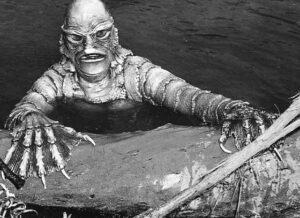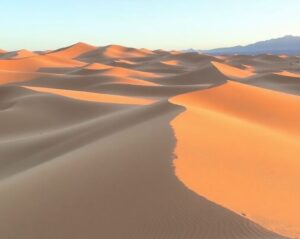
In the vast, sun-scorched expanse of Nevada’s high desert, a monumental work of art has emerged from the dust, drawing adventurers, art lovers, and curious wanderers to a remote corner of the state. Michael Heizer’s *City*, a sprawling land-art sculpture over a mile long, stands within the Basin and Range National Monument, a rugged wilderness of sagebrush and towering peaks. Since its public unveiling, this colossal creation—50 years in the making—has transformed an isolated valley into a pilgrimage site, sparking a surge in visits to a region once overlooked by all but the most intrepid explorers. This article dives into the story of *City*, its artistic significance, and its unexpected role in reshaping Nevada’s desert tourism landscape. From the vision of a reclusive artist to the ripple effects on local communities, here’s how *City* is putting Nevada’s wild heart on the map.
The Birth of a Desert Giant: Michael Heizer’s Vision
Michael Heizer, a pioneer of the land-art movement, didn’t set out to create a tourist attraction. His goal was audacious yet singular: to craft a sculpture that rivalled the scale of ancient monuments, using the earth itself as his canvas. *City*, located in Garden Valley within Lincoln County, Nevada, is the result—a sprawling complex of mounds, trenches, and concrete forms stretching 1.5 miles long and half a mile wide.
A Half-Century in the Making
Heizer began *City* in 1970, inspired by ancient sites like Chichen Itza and Native American mound-building traditions. Working largely alone or with small crews, he sculpted the desert with dirt, rock, and concrete sourced onsite, shaping a work that evokes both prehistoric ruins and modernist abstraction. The project, costing an estimated $40 million, was funded by art patrons, foundations like Dia and Lannan, and Heizer’s own resources. It wasn’t until its completion—decades later—that the public gained access, managed by the Triple Aught Foundation.
The sculpture’s scale is staggering. Some structures tower 80 feet high, dwarfing visitors who traverse its gravel paths. Its remoteness—three hours north of Las Vegas—only adds to its mystique. Yet, this isolation, once a barrier, has become a draw, luring those eager to experience what’s been called the largest contemporary artwork ever built.
Art Meets Wilderness
*City* sits within the 704,000-acre Basin and Range National Monument, established in 2015 under President Obama, partly to protect Heizer’s creation from threats like a proposed nuclear waste rail line. This federal designation preserved the surrounding landscape—home to Southern Paiute and Western Shoshone cultural sites—while framing *City* as a distinctly American endeavour. The Bureau of Land Management notes the monument’s pristine valleys and peaks, a backdrop that amplifies the sculpture’s otherworldly presence.
- Size: 1.5 miles by 0.5 miles—comparable to Washington, D.C.’s National Mall.
- Materials: Local dirt, rock, and concrete, minimally invasive to the ecosystem.
- Inspiration: Ancient ceremonial sites fused with industrial minimalism.
A Surge in Desert Pilgrims: The Tourism Boom
Since opening to the public, *City* has triggered an unexpected wave of visitors to the Basin and Range, a region previously known more for cattle ranches and UFO lore than cultural landmarks. Limited to six visitors per day via reservation, the sculpture’s exclusivity only fuels its allure.
From Obscurity to Spotlight
Before *City*, Garden Valley was a blip on the map, a three-hour drive from Las Vegas through barren highways and gravel roads. Lincoln County, with a population of just over 5,000, saw little tourism beyond passersby on the Extraterrestrial Highway near Area 51. Now, the Triple Aught Foundation reports a steady stream of reservation requests, with slots booking out months in advance. Visitors—ranging from art aficionados to outdoor enthusiasts—arrive in Alamo, the nearest town, where they’re shuttled to the site for a three-hour exploration.
Statistics reflect the shift. Nevada’s tourism sector, traditionally dominated by Las Vegas’s 40 million annual visitors, is seeing a trickle of that traffic divert northward. While exact figures for *City* are guarded, local estimates suggest hundreds visit annually—a modest but significant uptick for a county where solitude once reigned.
Case Study: The Alamo Effect
Alamo, a dusty outpost of 1,000 residents, is feeling the ripple. Local driver Ed Higbee, a fifth-generation Nevadan who ferries visitors to *City*, told ArtNews that the sculpture has brought new faces to town. Diners and gas stations report busier days during the visitation season (typically May to November), and some residents offer lodging or guided tours of nearby sites. “It’s not Vegas crowds, but it’s something,” says Higbee, a former rancher turned accidental ambassador.
The Visitor Experience: Art in the Wild
Visiting *City* isn’t a casual outing—it’s a journey. The sculpture’s scale and setting demand effort, but the payoff is profound, blending raw nature with human ingenuity.
A Trek Worth Taking
The process starts online via the Triple Aught Foundation, where tickets cost $150 for adults, $100 for students, and are free for Lincoln, Nye, and White Pine County residents. From Alamo, a 90-minute drive over unpaved roads leads to the site. There’s no signage, no guides—just a driver who drops you off with a warning about rattlesnakes and a promise to return in three hours.
Once inside, *City* unfolds as a labyrinth of forms—curved mounds, deep pits, and angular concrete slabs. Visitors like William Van Meter, writing for Artnet, describe it as “life-changing,” a place where “modernism, brutalism, and mysticism” collide. The silence of the desert, broken only by wind, amplifies the sculpture’s stark beauty.
Case Study: A Photographer’s Tale
Take Sarah, a photographer from San Francisco who visited *City* with a small group. “It’s not just art—it’s a hike through time,” she says. She spent her three hours capturing the interplay of light on concrete and earth, likening the experience to exploring an alien ruin. “You feel small, but included,” she adds, echoing the sentiment of many who find *City* both humbling and inspiring.
- Access: Limited to six daily visitors, reservation-only.
- Duration: Three hours to roam a mile-long masterpiece.
- Setting: Unspoiled desert with 360-degree mountain views.
Ripples Beyond the Sculpture: Impact on Nevada
*City*’s opening isn’t just about art—it’s reshaping perceptions of Nevada’s desert interior, with economic, cultural, and environmental implications.
Economic Sparks in a Quiet County
Lincoln County’s economy, long tied to ranching and sparse services, is getting a boost. While *City* itself generates no direct revenue (ticket sales fund maintenance), its visitors spend locally—on fuel, food, and lodging. The Travel Nevada site promotes the region’s new draw, encouraging exploration of nearby attractions like Pahranagat National Wildlife Refuge or Cathedral Gorge State Park. For a county where tourism once meant a quick stop at the Alien Jerky stand, this is a shift.
Cultural Resonance
*City* also elevates Nevada’s cultural profile. Once overshadowed by Las Vegas’s glitz, the state’s rural expanses are gaining recognition as a canvas for bold ideas. Heizer’s work joins other land-art icons like Robert Smithson’s *Spiral Jetty* in Utah, but its scale and inaccessibility set it apart. Art critics call it a “modern wonder,” a testament to human ambition amid nature’s vastness.
Environmental Balance
The influx isn’t without challenges. The Basin and Range’s fragile ecosystem—home to Joshua trees, pronghorn antelope, and ancient rock art—faces pressure from increased foot traffic. Heizer designed *City* to minimize disruption, using local materials and avoiding native plant displacement, but the monument’s broader trails and campsites see more use. Conservationists urge sustainable practices, like sticking to designated paths, to preserve this pristine wilderness.
The Allure of the Remote: Why *City* Captivates
What drives people to a sculpture in the middle of nowhere? *City* taps into a primal urge—to seek, to discover, to stand in awe of something greater.
A Magnet for the Curious
Its exclusivity—six visitors a day—creates a sense of privilege, while its scale offers a rare encounter with art unbound by galleries. Travelers crave authenticity, and *City* delivers: raw, unscripted, and tied to the land. As the Smithsonian Magazine notes, it’s “a pilgrimage” that rewards effort with wonder.
- Exclusivity: Limited access heightens its mystique.
- Scale: A mile-long artwork dwarfs human presence.
- Isolation: Remote setting amplifies its impact.
Conclusion: Nevada’s New Frontier
Michael Heizer’s *City* is more than a sculpture—it’s a catalyst, turning Nevada’s desolate Basin and Range into a destination of global intrigue. From its half-century creation to its unveiling, this desert colossus has sparked a tourism boom, drawing visitors to Lincoln County’s wild edges and injecting life into a quiet region. It’s a tale of art meeting nature, of solitude becoming a stage, and of a state redefining its identity beyond the neon glow of Las Vegas. Economically, it’s a spark; culturally, a beacon; environmentally, a call to care. As *City* stands sentinel in Garden Valley, it beckons the world to Nevada’s vast unknown—proof that even in the emptiest places, something extraordinary can take root and thrive.



